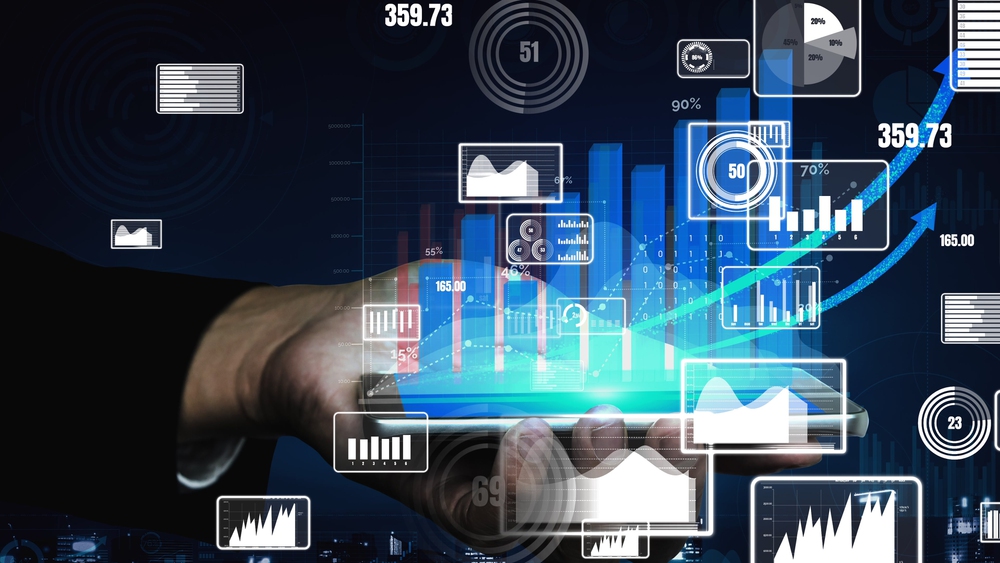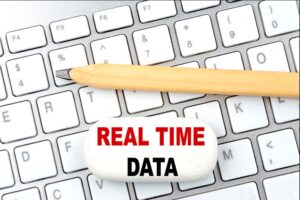
ZoomInfo created a B2B search tool that uses deep learning to give sales teams the right info for their needs. CDInsights recently sat down with Amit Rai, Senior Vice President of OperationsOS, Solutions Consulting, and Data Services at the company to talk about why the need for B2B search and how the tool was developed.
Elisabeth Strenger: What is your role at ZoomInfo?
Amit Rai: I joined ZoomInfo through an acquisition of a company called EverString, where I was the chief operating officer running product sales, marketing, and customer success. If you think about ZoomInfo, traditionally, they had a platform for salespeople – it’s called sales OS. They now have a platform for marketing people to do Account Based Marketing called MarketingOS. When they acquired EverString, they allowed me to continue to build what we call OperationOS. It’s the Data-as-a-Service solution from ZoomInfo. Then, I got the opportunity to acquire a company called RingLead, which is in data orchestration. So my user persona is master data management, data analytics, and sales and marketing Ops.
Elisabeth: So you somehow enable the trend towards having independent data and analytics groups to serve the needs of their business unit.
Amit: I’ll give you a very concrete use case. So think about large financial institutions like Capital One, JP Morgan Chase, and M&T Bank. They have been using traditional data providers like DNP. So if you think about the core of D&B, they have been in the business for 200 years and started in the credit and risk world. And so their methods are such that they rely on their networks and manual methods of data collection.
What ZoomInfo did from the very beginning was crawling. And EverString and all these other companies that ZoomInfo acquired, the common theme that you will find is that they were all experts in B2B natural language processing.
So we have roughly half a million business semantics that we are using to index the entire world wide web; it’s almost like a search engine for B2B. Let’s say I asked you, “How many dry cleaners are in Danville, California?” And if I asked you literally, “What do you think is the name of the company?” If I force you to answer the company’s name based on that information? Is it far-fetched to say that the name of the company is Dry Cleaners? And if I asked you where do you think it is? It will say Danville, California. If I asked you, what do you think is the company’s industry? It’s a dry cleaner, so services.
What we just did is a deep learning model. That’s what we are doing. There are two types of information: deterministic information, like the name of the company, location of the company, website if it exists, or industry of the company. We are using deep learning models, just like how you said that. A dry cleaner has to be professional services, then next six-digit code for professional services.
If you ask the same question to D&B, their answer would be, “They have never applied for a DUNS number. I don’t know.” What is their revenue? “I don’t know. They never reported the revenue.” Whereas if I asked you: What’s the revenue of a dry cleaner? You will say, “It’s probably between zero to $1. million dollars.” And then I’ll ask you again to critique that. Are you sure it is not, say, $20 billion? You will say: I’m sure.” Okay, do you think it is $10 million? You say, “Very unlikely.” Why? “Because it’s a dry cleaner.”
The deep learning model is building the company profile. So, as a result, if you’re a large bank, and if you have to issue a credit card for a small business, and if you’re using D&B, the answer would be “I don’t know.” But when you’re using ZoomInfo, the answer would be: “It’s a dry cleaner. It’s in California. The revenue is this.” So our match rates and fill rates are close to 100%.
Elisabeth: You start with very few isolated data points. You build in context and assumptions, and then you can deduce information. So you’re creating the information you got in your research engine, and you present the findings, whereas D&B can only talk about what’s known.
Amit: If I had to make D&B really good in terms of data quality and everything, what would I do? I will hire millions of people to research. So how would I research? I’ll go on the website. Going on the website – that method is called crawling– then extract information and model. So we just predicted the revenue model.
Crawl/extract/model is a more modern alternative to traditional data providers like D&B. Sales and marketing people need company information. And for predictive modeling, segmentation, or total addressable market analysis, they need real people who work at those companies. So we are scaling it.
We have around 400 manual workers who are constantly training the machine. And then, we are using machines to scale this process. That’s why this is business operations always, which is master data for revenue teams, not master data for finance.
Why do you think sales and marketing people do not talk with IT that much? Because IT projects are five years, six years, ten years, and longer. Salespeople will get fired right away if they don’t meet their quota. That’s why it results in multiple disparate systems. In today’s world, especially when CEOs are thinking about operational efficiency or business outcomes, you need a foundational data source that can actually impact the top line.
So this is master data for revenue outcomes. We are helping analytics people because analytics people for any predictive modeling need to have the industry of a company, revenue of a company, employee size, etc. so that the predictive modeling can do something. That’s why analytics people love us; they have a 100% match rate. D&B is just a different use case.
Elisabeth: Dunn & Bradstreet was built at a time when it was a rearview mirror analysis.
Amit: And it is still good for finance use cases. So I’ll give you another use case. Let’s say I’m a salesperson, and I go into D&B and search for ZoomInfo. D&B will say that’s five companies, the holding company, the legal company, and things like that. Now, if I give it to a seller and say that I’ve given you five companies to go and prospect, you will start hating me. Whereas in ZoomInfo, it’s just one company that has made acquisitions of 13 or 15 companies. This is just like how a normal human being would understand, right? One is a finance use case, but the other is a sales use case.
When you think about the B2B world, there is almost no company that goes deeply into B2B business semantics. Imagine a world where I say cat, and instead of thinking about cat, the animal, you will start thinking about Caterpillar, the company– that’s B2B semantics. That’s an application of AI.
Nobody teaches in school because, first, data is sparse. There are 7 billion people on planet Earth. More than 2 billion are on Facebook. But only 22 million companies in the United States are active. Now of those 32 million, there are only 10 million companies that are big enough to have a dedicated domain. There are 5 million companies that have some kind of Facebook, Yelp, Yellow Pages, but a majority of 17 million businesses do not have any online presence. So when you have that kind of world, you won’t have data. So when you don’t have data, how can you do analytics about a business?
Your models have to become refined so that you can do more with less. That’s why we decided to build a modern alternative to D&B, where we build a data layer first. Once you have built the data layer first, then you could talk about B2B Analytics and AI, but those are the things that are not taught in school. That’s why a company has existed for 200 years and has not died.
But that’s why after D&B, ZoomInfo became one of the world’s largest publicly traded B2B commercial data providers because not everybody can do it.
Elisabeth: You, in a sense, put your own army of data scientists to work so that companies don’t really have to. You are able to deliver the 360-degree view.
Amit: B2B data, as I said, is sparse. The only way you can actually do something meaningful is when you have this underlying foundational data. Once you build the data layer, you deliver it to data analytics and data science so that they can do their job. That’s what we’re doing. So B2B, a commercial data provider for data analytics folks. So they can use their data scientists layer to do something that’s very specific to their business.
Bio: Amit Rai is the Senior Vice President of OperationsOS, Solutions Consulting, and Data Services at ZoomInfo (NASDAQ: ZI), where he spearheaded the creation of ZoomInfo’s OperationsOS business line and supervises the Solutions Engineering and Data Services teams. He has worked at the forefront of Artificial Intelligence software technology and is renowned for developing groundbreaking products from conception to hundreds of millions of dollars in revenue generation.
Elisabeth Strenger is a Senior Technology Writer at CDInsights.ai.


